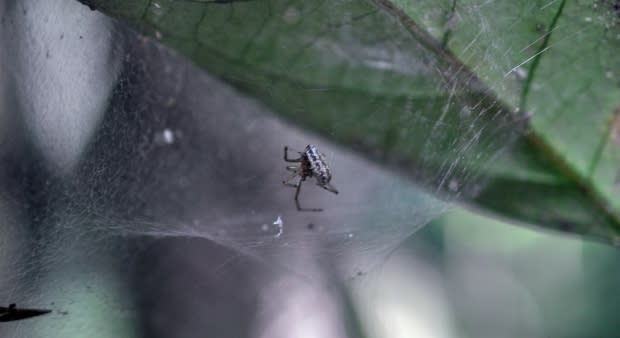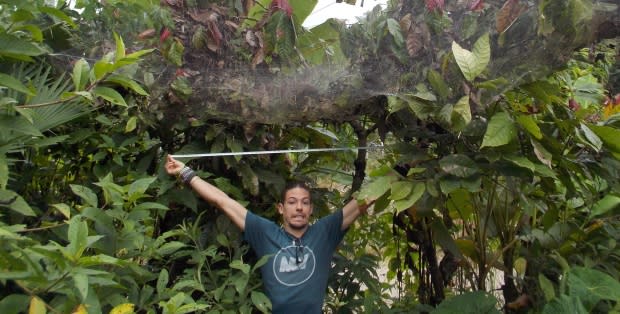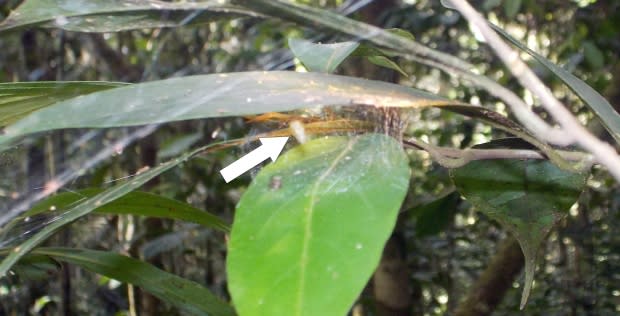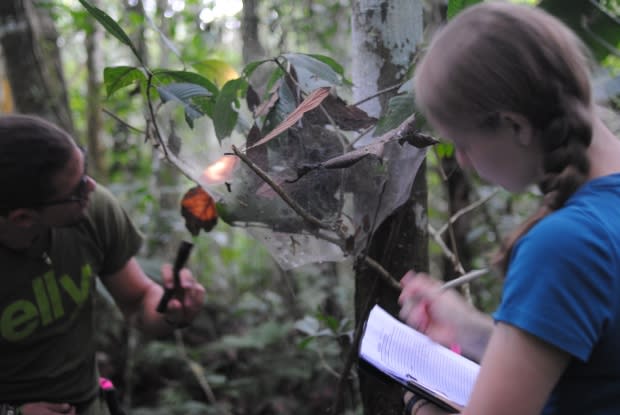B.C. researchers discover parasitic wasps that hypnotize and feast on spiders
Philippe Fernandez-Fournier was in Ecuador studying "social" spiders that typically stay close to their colonies.
So, when one wandered off alone and started spinning a thick, cocoon-like web, he noticed.
"It was very odd ... so I started taking notes," said Fernandez-Fournier, a former master's student in the University of British Columbia's department of zoology.

Those first notes led to the discovery of a new species of wasp that transforms the sociable spiders into lifeless drones that abandon their own colonies to obey the wasp instead.
And, eventually, die to keep the wasp alive.
Egg comes first
The findings, published in Ecological Entomology this fall, detail the unusual parasite-host relationship between the Zatypota wasp and the spider.
It begins when an adult female wasp — only about the size of a fingernail — lays an egg on the spider's abdomen. When the larva hatches, it latches on to its unlucky host and starts feasting.
The larva slowly takes over the spider's body as it grows, keeping it alive until it's ready to move to a proper nest.
Then, it commands its spider to spin a dense, protective cocoon not far from the colony.

The wasp then kills the spider, devours the corpse and crawls into the cage-like web. An adult wasp emerges fully formed after about 10 days.
Samantha Straus, co-author of the study and a PhD candidate in UBC's department of zoology, said it's not clear how the wasp takes over the spider's brain. Her best guesses are some kind of hormonal or viral influence.

She said the wasps essentially use the spiders to ensure their own survival.
"The environment in Ecuador is intense," Straus said in a phone interview on Tuesday. "The web is basically a protective cage for the wasp to keep growing."
Parasitic wasps aren't entirely new, but the Zatypota species is the only one the authors believe can manipulate social spiders.
The Vancouver-based student described the wasp hijacking, which was researched over six years, as one of the "coolest" things she's "ever worked on."
So cool, that Straus got a tattoo of the wasp on her arm — keeping with her tradition of getting some kind of tattoo in homage to her various field studies.
"I think they're beautiful," she said, adding: "You have to be a pretty big nerd to think this stuff is cool. Which I am."


